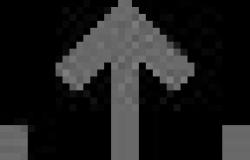The exterior looks like a common white, blind hangar, stranded in a corner of the German Aerospace Center (DLR). But in the nine-meter-high structure, with walls and ceiling as inky as space, lies a replica of the lunar surface.
Under the sole light of a spot located very low at one end of the 700 square meters – the equivalent of more than three tennis courts – the relief of bumps and craters alternates areas of deep black with those of ‘harsh light. On land covered in a strange pale gray dust, dotted with rocks.
“I walked there yesterday in our new space suit, and when you enter the gray areas you can’t find your way around. Is it just a hollow or an abyss?“, notes Matthias Maurer, astronaut from the European Space Agency (ESA), whose training center (EAC) is located opposite LUNA.
An engineer in materials sciences, he is the initiator of the joint DLR-ESA project, launched more than ten years ago. And will be the first actor next Wednesday in the inauguration of “this unique installation, which integrates so many different elements, without equivalent in the world, even at NASA“.
To avoid having to buy 900 tonnes from the United States, the ESA developed EAC-1A, an equivalent of lunar regolith, the thick layer of dust which covers the star for several meters.
To the touch, it is as rough as a pumice stone. The fineness of its grains, combined with its very abrasive nature, makes it dangerous for the respiratory tract and for equipment.
Living and working on the Moon
When we step on it, “it rises and floats” in the air, explains Matthias Maurer. On the Moon, the regolith is even more problematic, because it is charged with static electricity, making it adhere to any surface. To the point that the astronauts of the Apollo missions feared for the waterproofness of their spacesuits after just three sorties.
On the Moon, it results from countless asteroid impacts on the lunar crust. That of LUNA is a “volcanic basalt material ground and sieved then mixed“, explains Jürgen Schlutz, project manager for ESA. A clever mixture produced from an ancient German volcanic site.
LUNA is an assembly of nine-meter high containers. Photo ESA
Engineers are still waiting for a special delivery of 20 tonnes of Greenlandic regolith, which will be used in the “dust laboratory“(dust lab), a hermetically sealed space inside LUNA, for testing equipment.
The place will soon host a mobile artificial sun, allowing a grazing light effect which changes the appearance of the land from hour to hour.
An innovative harness system, controlled from the top of the structure, will imitate the very low lunar gravity, so that an astronaut weighing 60 kilos would not have to exert more effort than if he weighed 10.
Frozen ground
Another innovation, the possibility of freezing the ground of LUNA to a depth of three meters. “Because on the Moon we will want to drill places where we can find water ice.”explained Matthias Maurer.
And an underground space to test techniques for using regolith, as a construction element, or to extract oxygen.
In one corner, a tilting section must test the ability of astronauts, and equipment, to overcome slopes of up to 50 degrees. A complicated exercise on this material in which you initially sink up to your ankle, like when you climb a dune.
“After a hard eight-hour day surveying the moon, you go to FLEXHab“, continues Matthias Maurer.
This housing module designed for four astronauts will be connected directly to LUNA within a week. They will use a watertight airlock to take off their suits and prevent any intrusion of regolith into their habitat.
Then will come a closed circuit plant production module, Eden, tested for five years in a DLR Antarctic station.
In the end, it is an entire ecosystem that must make it possible to “understand how to live and work on the Moon“, according to Jürgen Schlutz. And incidentally to help guarantee places for European astronauts in the American Artemis program returning to the Moon.
For Matthias Maurer, a natural candidate for this adventure, entering LUNA “it’s a bit like I already have one foot on the Moon“.

![[Espace] You can almost walk on the Moon near Cologne](https://euro.dayfr.com/temp/resized/medium_2024-10-05-4afb4495a0.jpg)




